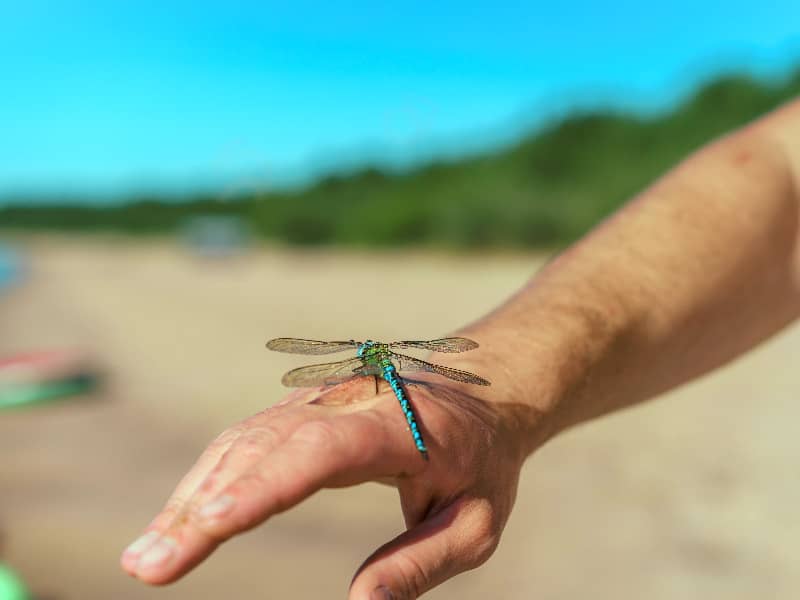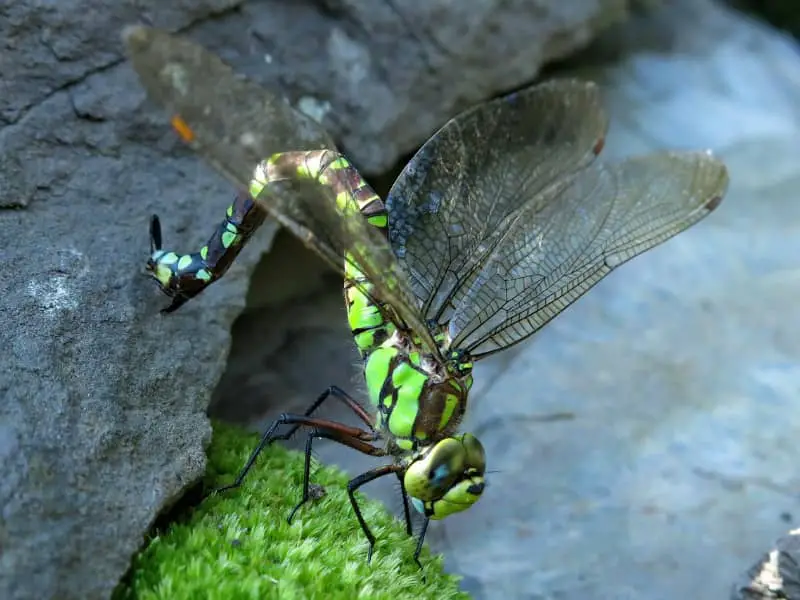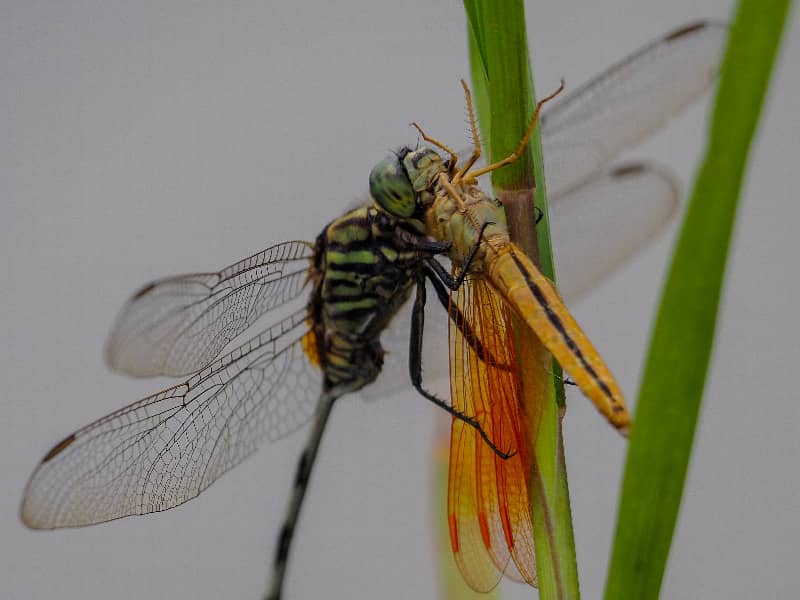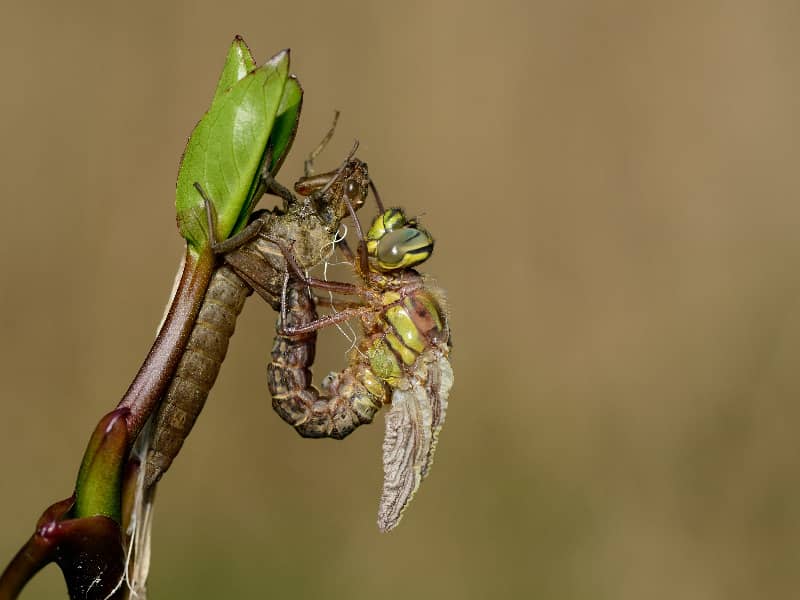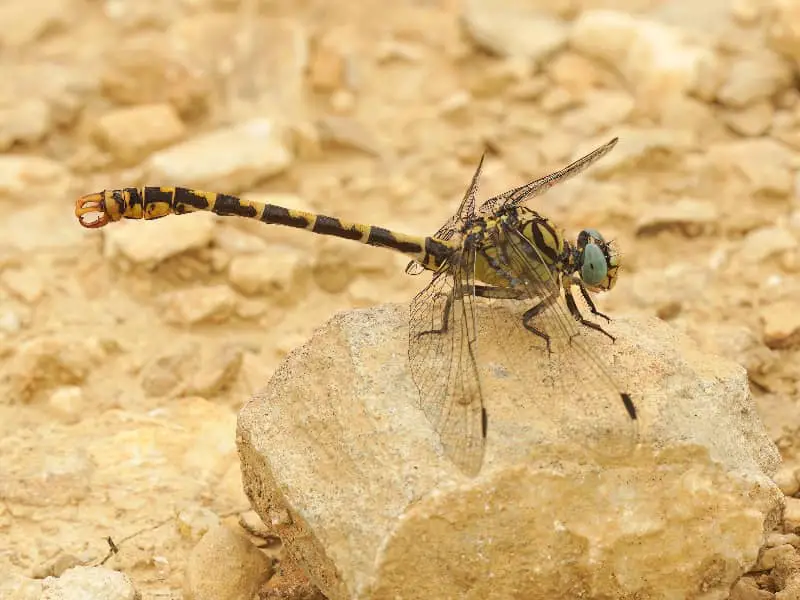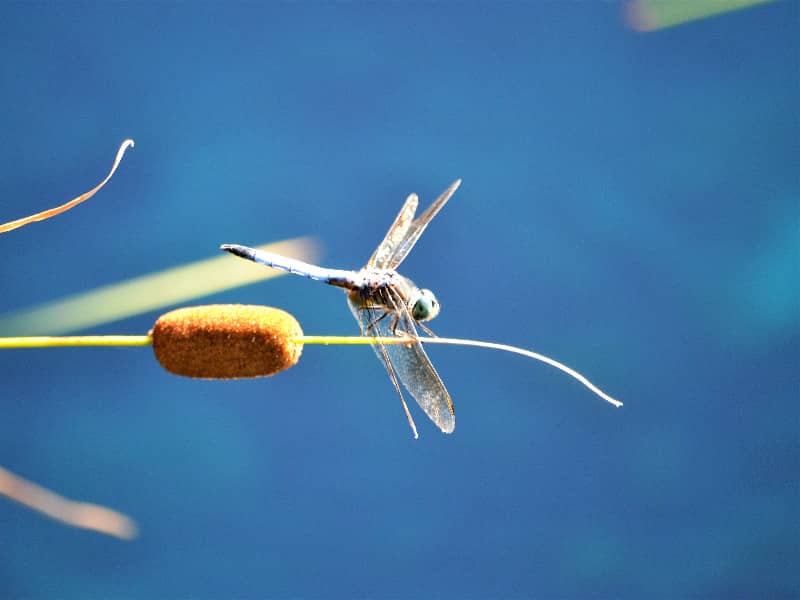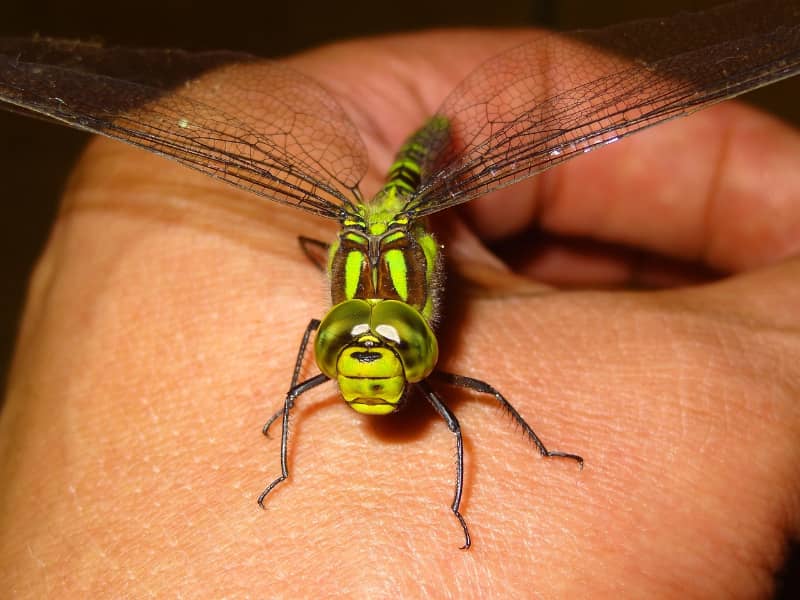
The damselfly
Have you ever heard of the great damselfly? If not, it's high time you did, because this fascinating creature is like the Beyoncé of the insect kingdom! The damselfly, also known as Anax imperator, is a large dragonfly species found in many parts of Europe.
With its striking colors and majestic flying style, it is a real eye-catcher. In this article, we will take a closer look at the physical characteristics, habitat, behavior and interesting facts about the damselfly. So buckle up and let's dive into the world of this impressive dragonfly!
Physical characteristics of the damselfly
The damselfly is one of the largest dragonfly species in Europe. It has a slender body that is about 7 to 8 cm long, and its wingspan can be up to 12 cm. Its wings are transparent and have a conspicuous reticulation. The body of the damselfly is brightly colored in green, blue and black, which makes it a real eye-catcher. Its head is large and its eyes are multifaceted, which gives it an impressive vision. The males also have a prominent blue spot at the base of their abdomen, while the females have a green spot.
The damselfly also has a unique flight technique. Unlike other dragonfly species, it does not fly in a straight line, but moves in quick, sinuous flight maneuvers. This agile flight pattern makes it a master of the skies and allows it to effectively hunt prey and avoid enemies.
Habitat and distribution
The damselfly is common in many parts of Europe. It prefers stagnant waters such as lakes, ponds and slow-flowing rivers as its habitat. There it lays its eggs in water plants, which serve as food for the larvae. The larvae spend most of their lives in the water, where they feed on small insects and other aquatic organisms. Once they are fully grown, they climb out of the water on plant stems or other structures and molt into adult dragonflies.
The damselfly is a migratory bird and migrates to warmer areas during the summer to mate and lay eggs. Therefore, you can often find them near water bodies in rural and urban areas. It is very adaptable and can survive in different habitats as long as it has access to suitable water bodies.
Life cycle of the large damselfly
The life cycle of the damselfly consists of four main stages: Egg, larva, pupa and adult dragonfly. Females lay their eggs in aquatic plants, usually in shallow waters. The eggs hatch after a few weeks and the larvae hatch from them. The larvae spend most of their lives in the water, feeding on small insects and other aquatic organisms. They go through several molting stages before finally developing into a pupa.
The pupal dormancy period usually lasts about two weeks, but this can vary depending on the ambient temperature. During this dormancy period, the larva transforms into an adult dragonfly. Once the pupa matures, it breaks out of its shell and climbs plant stems or other structures above the water. There it stretches its wings and waits until they are completely dry before making its first flight as an adult dragonfly.
Behavioral patterns and adaptations of the damselfly
The damselfly has fascinating behaviors and adaptations that help it survive in its environment. It is an excellent hunter and feeds on other insects such as mosquitoes and flies. It has sharp jaw claws that it uses to catch and crush its prey. It is also extremely agile in flight and can quickly change direction to pursue prey or avoid enemies.
Another interesting behavior pattern of the damselfly is its ability to aggregate. Sometimes several individuals gather in one place to hunt or mate together. This behavior can be observed near bodies of water where they are often found in large groups. This aggregation behavior provides them with protection from predators and increases their chances of successful reproduction.
Interesting facts about the damselfly
- The damselfly can reach speeds of up to 50 km/h in the air, making it one of the fastest dragonfly species.
- It has exceptional visual acuity and can detect insect movement from a great distance.
- The males of the damselfly are territorial and defend their territory from intruders.
- The damselfly has a life expectancy of about two to three months.
How to recognize and identify the damselfly
The damselfly is relatively easy to recognize due to its striking colors and size difference from other dragonfly species. Males have a blue spot at the base of their abdomen, while females have a green spot. Their wings are transparent with a conspicuous reticulation. When they fly, they have a majestic flight style that differs from other dragonfly species.
When you see a damselfly, you can be sure that it is an impressive creature. Take a moment to observe it and admire its beauty. But be careful, because it can fly very fast and may be gone before you know it!
Conclusion
The damselfly is undoubtedly one of the most fascinating dragonfly species in Europe. With its striking appearance and majestic flying style, it is a true jewel of the insect kingdom. Its physical characteristics, habitat, behavior and adaptations make it a remarkable creature worth discovering.
The next time you walk along a body of water, keep an eye out for the large damselfly and be enchanted by its beauty!
Author
Last posts
- 15. March 2024ChickensRobuster Kunststoffzaun für Hühner – Tipps
- 13 October 2023DragonfliesBlue feather damselfly
- 12 October 2023DragonfliesYellow dragonfly - What are the species?
- 12 October 2023DragonfliesEarly Adonis Damselfly

